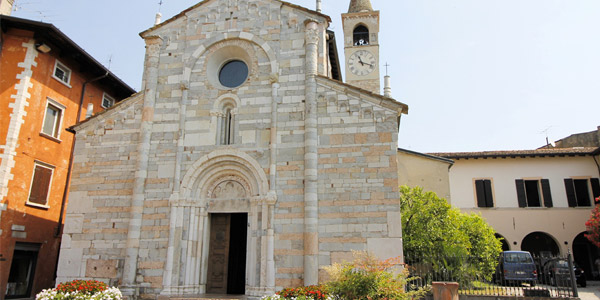Blog e Media Places
The church of Sant'Andrea in Maderno

The town of Toscolano Maderno with its 8,000 inhabitants has a rich history dating to the Middle Ages. A stone's testimony of this era is the parish church of Sant'Andrea of ''the 12th century, which is right near the beautiful Maderno lakefront. Sant'Andrea is an important example of the Romanesque-Lombard architectural style of northern Italy. In addition to the beautiful sculptures of the portal, there are beautiful Renaissance wall paintings that leave a special impression. It is believed that the church was built on the ruins of a former building as abseiling masonry posts favor this thesis. In the past centuries, various alterations have been made to adjust to liturgical periods.
Above the exterior facade, a wise conglomerate of stones and polychrome marble that gives a particular brightness. The attached decorative panels as well as the head elements also have a toning effect. If the spectator is in front of the church door, he is impressed by the lunette depicting the Virgin Mary and the baby Jesus.
'The pillars are divided into three aisles, with typically Romanesque decorative motifs. It should be noted that these are among the most important artistic elements of the interior. The ceilings are equipped with a cruise liner and the single ships and dome, which is located above the main altar, were executed at the end of the 15th century. Very suggestive is the crypt-oratory where the relics of Sant'Ercolano were kept in the first period. In 1580, then the Cardinal Borromeo ordered the closure of the crypt, which was reopened only in 1962. In 1825 the relic was transferred to the new parish church, only the sarcophagus was preserved in its place, in the church of Sant'Andrea. In the 15th century the three aisles and the main altar space were decorated with frescoes, of which unfortunately today only a few fragments can be seen.